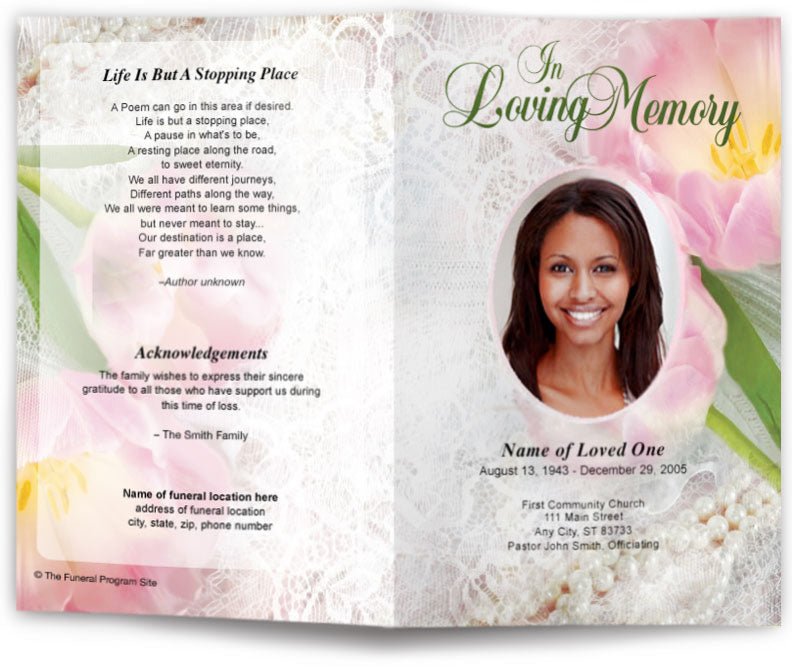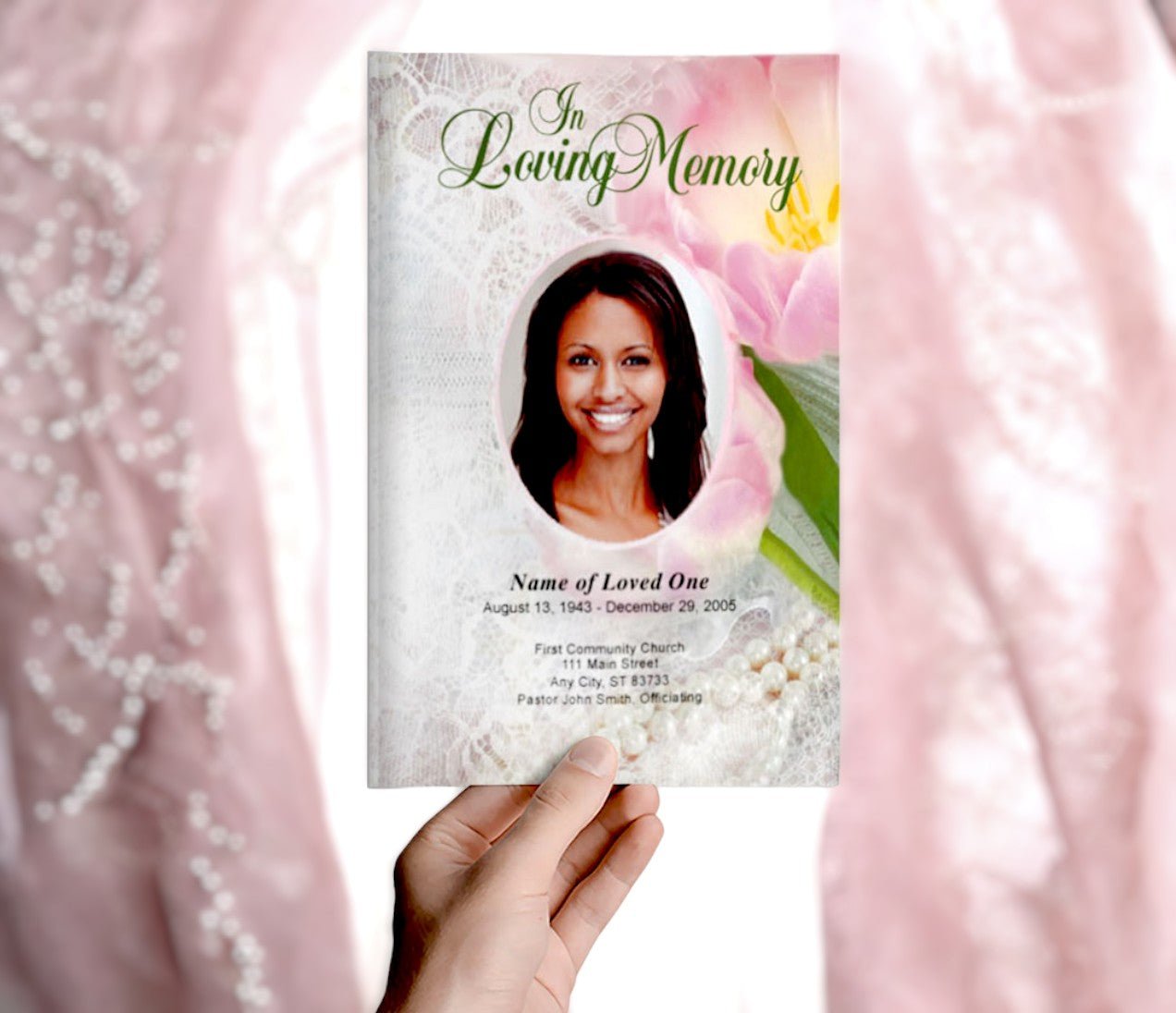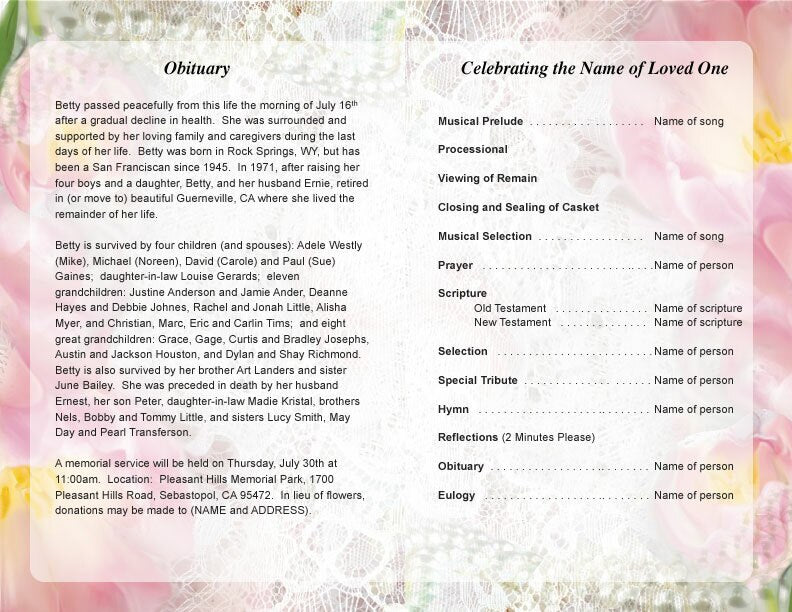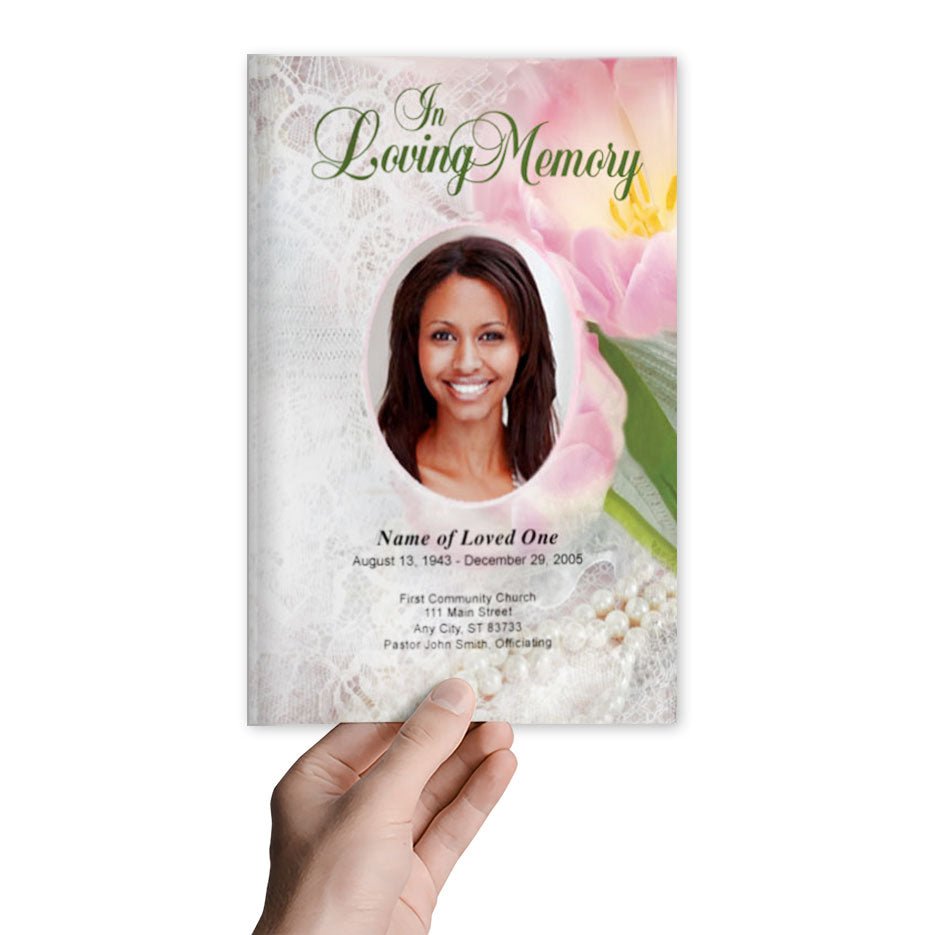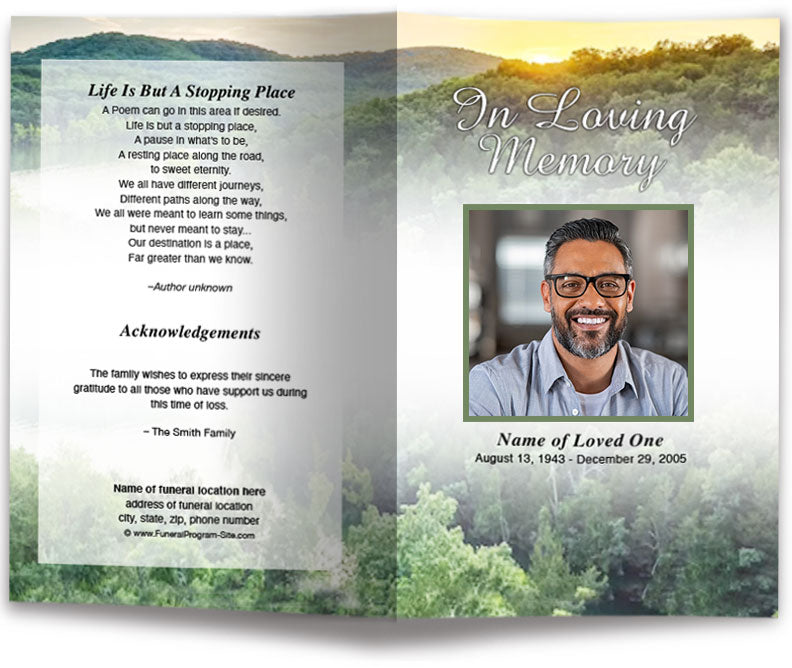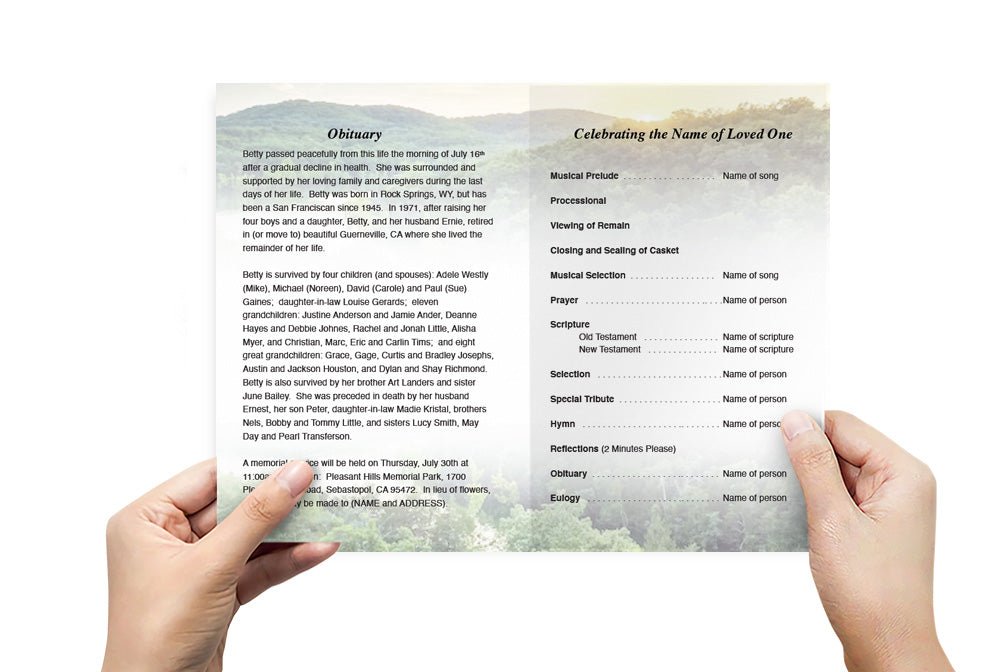Designing Memorial Programs That Celebrate Life’s Journey

Memorial programs are more than just an outline of a service; they are heartfelt tributes that commemorate the life and legacy of a loved one. Thoughtfully designed, these programs serve as keepsakes that celebrate the unique journey of the deceased, offering comfort and connection to those in attendance. Crafting a meaningful memorial program involves combining visual elements, personal touches, and a clear structure that reflects the essence of the individual being honored. This guide explores how to design a memorial program that truly celebrates a life’s journey.
The Purpose of a Memorial Funeral Program
A memorial program serves multiple purposes during a funeral or celebration of life event. It guides attendees through the order of service, provides a glimpse into the life and personality of the deceased, and acts as a tangible keepsake for family and friends. Beyond its practical functions, a well-designed program can evoke memories, share stories, and offer solace to those grieving.
Key Elements of a Memorial Program
1. Cover Design
The cover is the first impression attendees will have of the program. It should set the tone for the event and reflect the personality of the deceased. Key elements to include on the cover are:
- A high-quality photo of the deceased, showcasing a meaningful moment or their personality.
- Their full name, including any nicknames or titles they were known by.
- Birth and death dates.
- A meaningful quote, scripture, or poem that reflects their life journey.
2. Order of Service
The order of service is an essential part of the program, providing a roadmap for the event. It typically includes:
- Opening remarks or a welcome message.
- Prayers or blessings.
- Musical performances or hymns.
- Readings from scriptures, poems, or literature.
- Eulogies and tributes.
- Closing remarks and a final blessing.
Clearly outlining the sequence ensures that attendees can follow along and participate in the service.
3. Obituary or Life Story
Including an obituary or life story offers attendees a deeper understanding of the deceased’s journey. Highlight significant milestones, achievements, relationships, and qualities that made them unique. Writing this section with warmth and sincerity helps to celebrate the essence of their life.
4. Photos and Visual Memories
Photos provide a visual representation of the deceased’s life, capturing precious moments and memories. You can include:
- A collage of family moments, milestones, and candid shots.
- A timeline of significant life events with accompanying images.
- A full-page photo that holds special meaning, such as a wedding portrait or a favorite vacation memory.
5. Funeral Program Poems, Quotes, and Scriptures
Incorporating inspiring or comforting words adds emotional depth to the program. Choose passages that resonate with the deceased’s values, beliefs, or favorite sayings. These can be placed strategically throughout the program to provide moments of reflection for attendees.
6. Acknowledgments and Thank-You Notes
Expressing gratitude to those who supported the family or contributed to the service is an important part of the program. A simple thank-you note can acknowledge attendees, caregivers, clergy, or anyone who offered assistance during a difficult time.
7. Additional Details
Include practical information such as:
- Directions to the burial or reception location.
- Contact details for the family, if appropriate.
- Suggestions for memorial donations or causes the deceased supported.
Designing a Memorial Funeral Program
1. Choose a Layout
Selecting the right layout is the foundation of a well-designed program. Popular options include:
- Bifold Programs: A single sheet folded in half, creating four panels for concise content.
- Trifold Programs: A sheet folded into three sections, providing six panels for more detailed tributes.
- Booklet-Style Programs: Multi-page layouts that allow for extended content, such as eulogies, life timelines, and photo spreads.
2. Pick a Theme
A cohesive theme ties the program together and reflects the personality of the deceased. Themes can be inspired by their hobbies, favorite colors, faith, or a special aspect of their life. For example:
- Nature Themes: Use floral patterns, tree motifs, or serene landscapes for someone who loved the outdoors.
- Religious Themes: Incorporate crosses, doves, or scriptures for a deeply spiritual individual.
- Celebration Themes: Use vibrant colors, festive designs, or imagery that represents joy and positivity.
3. Use High-Quality Materials
The quality of materials used for the program can elevate its overall presentation. Consider using:
- Heavyweight or textured cardstock for durability and a premium feel.
- Glossy or matte finishes to enhance the visual appeal of photos.
- Professional printing services for crisp, polished results.
4. Add Personal Touches
Personalization makes the program unique and meaningful. Include elements such as:
- A favorite quote or saying of the deceased.
- Symbols that represent their interests or heritage.
- Customized borders or patterns that reflect their style.
Tips for Designing an Impactful Program
Keep the Layout Balanced
Avoid overcrowding the design with too much text or imagery. Use white space effectively to create a clean and organized layout that is easy to read.
Choose Readable Fonts
Select fonts that are legible, even from a distance. Pair decorative fonts for headings with simple serif or sans-serif fonts for body text.
Maintain a Cohesive Color Scheme
Stick to a harmonious color palette that aligns with the theme. Soft pastels, neutral tones, or monochromatic schemes often work well for memorial programs.
Proofread Thoroughly
Ensure all text is accurate and free from spelling or grammatical errors. Double-check names, dates, and event details to avoid mistakes.
Test Print Before Finalizing
Print a single copy to check the design, colors, and alignment before printing multiple programs. Adjust any issues to ensure the final product looks polished.
Innovative Ideas for Memorial Programs
Interactive Features
For modern memorials, consider adding QR codes that link to online photo galleries, tribute videos, or memorial websites. This allows attendees to engage with additional content and keeps the program dynamic.
Memory Sharing
Include a blank section for attendees to write messages, memories, or condolences. This transforms the program into a collaborative keepsake filled with love and support.
Keepsake Additions
Incorporate detachable elements such as bookmarks, small cards with a favorite quote, or plantable seed paper that grows into flowers as a living tribute.
Popular Tools for Designing Memorial Programs
Creating a memorial program doesn’t require professional design skills. Many user-friendly tools and platforms are available to help families design meaningful and elegant programs:
- Canva: Offers drag-and-drop templates with customization options for photos, text, and colors.
- Microsoft Word or Publisher: Ideal for simple layouts with pre-designed templates.
- Adobe InDesign: Perfect for advanced customization and professional-grade designs.
- Google Docs: A free and collaborative tool for creating basic programs.
The Role of Memorial Programs in Celebrating Life
A thoughtfully designed memorial program goes beyond its functional purpose to honor and celebrate the unique journey of a loved one. It tells their story, highlights their accomplishments, and preserves memories that will be cherished by family and friends. By combining creativity, personalization, and attention to detail, you can create a program that truly reflects the essence of the deceased and provides comfort to those who gather to remember them.
Conclusion
Designing a memorial program that celebrates life’s journey is a deeply personal and meaningful task. By incorporating essential elements, choosing a cohesive theme, and adding personal touches, you can create a program that serves as both a guide for the service and a treasured keepsake. Whether you opt for a simple bifold layout, a detailed booklet, or a modern digital format, the key is to capture the essence of the individual and honor their memory with love and care. A well-designed memorial program becomes a timeless tribute, offering comfort, connection, and reflection for years to come.










